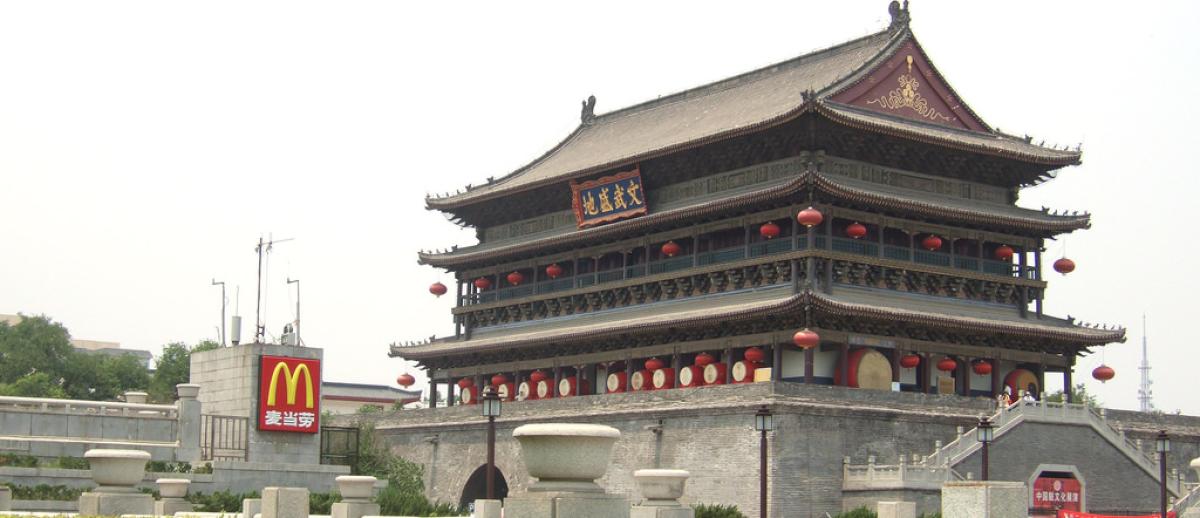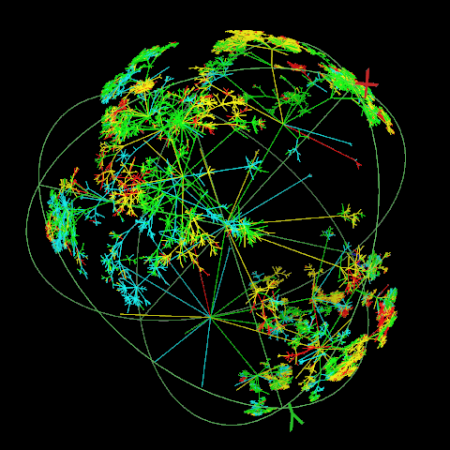Complex Human ‘Transitions’ that Shape Our World
archive


Complex Human ‘Transitions’ that Shape Our World
The world we live in is a rapidly changing place. Today several human change processes labeled “transitions”—complex multi-scalar dynamics that include the migration transition, the urban transition, the nutrition transition, the interrelated but distinct mortality, epidemiologic, and health transitions, and the forest transition—are studied with heightened appreciation for their profound interplay. Most academic research concerns itself with questions smaller in scale than an ensemble of half a dozen closely interrelated global processes and analyzing complex systems is a field in itself, usually requiring formidable computing power. But while these transitions interact in little known, perhaps not fully knowable ways, I believe that arriving at a picture of our world’s complex global interconnectedness demands an attempt to hold the full ensemble in mind. To this end I present here a simplified overview of these transitions and their interactions.
Migration, the permanent movement of humans across space, is a useful and readily understandable entry point into the ensemble of interrelated global processes. Most international migration occurs “up the ladder” from developing to the developed world, although the total movement is complex and varied. The United States is far and away the world leader in both the percentage of foreign-born population and actual immigrant residents. Internal migration, the movement of people within national borders, is less discussed and less studied by scholars. This is in part because it is harder to measure, less often measured, less reliably measured, and inconsistently measured. However, it is without doubt a process of immense scope. For example, somewhere between 200 and 400 million people have migrated within China in the last 40 years (Chan and Bellwood 2011). To grossly characterize a vast and complex system: most internal migration in the last hundred or so years has been from rural places to urban places, with this pattern holding true across the development continuum. The two most common motivations for immigrants, in order of importance, are desire to improve one’s economic situation and flight from conflict (Massey 2001). As places undergo change, the migration process “transitions” from one state to another—for example, from a condition of high out-migration to high in-migration (Friedmann 2005).

Visualization of a complex system
Source: Young Hyun
This movement of people has economic, social, cultural, political, and even environmental ramifications. A transition process directly “downstream” from the migration transition is the urban transition: the shift of population from rural environments to urban environments (Pannell 2002). In the last 200 years the world population has gone from less than 10% to more than 50% urban. The developed nations are all overwhelmingly urban, the developing world is moving quickly in that direction.
These movements from developing to developed and from rural to urban also impact the other transitions. One perhaps seemingly minor shift associated with these movements is the change in what people eat. The nutrition transition refers to the broad changes in the pattern of human diet that have occurred across time and space. The nutrition transition is described by five stages with the vast majority of the world’s people either emerging from undernutrition due to a lack of calories or certain nutrients, or engaged in a modern form of malnutrition caused by too-many calories from unhealthy sources. This transition results in the diminishment of famine and related diseases, but also the rapid growth of nutrition-related chronic diseases such as obesity, diabetes, cardiovascular disease, and cancer. The transition to this new diet has already occurred throughout the developed world and is occurring in the developing nations at a rapid pace. (Caballero and Popkin 2002; Ervin et al. 2013)

This change in diet reduces susceptibility to communicable diseases, historically the main non-age related causes of death. However, by contributing significantly to the rise in chronic disease, now the leading cause of death worldwide, this shift feeds another of the human change processes. Labelled the mortality, or epidemiologic, or health transition(s) (with different emphasis’s for each term), the recent large-scale change in human mortality is caused in part by the nutrition transition but also in part by the urban transition, as living in urban environments is correlated with if not caused by changes in mortality patterns (Frenk et al. 1991; Omran 1971; Caldwell 1976). The mortality transition itself can be viewed as a part of a larger demographic transition, which is the change from a demographic pattern of high birth and death rates to one of low birth and death rates in a population (Caldwell 1976). Changes in birth and mortality rates are again connected to living in the developing or developed world and in rural or urban places.
The nutrition transition and the urban transition also have some direct impacts on the natural environment. Eating more meat and animal products, and more processed food, all produce much higher environmental impacts. Agriculture is probably the single largest contributor to environmental change globally. In general, meat is about one tenth as efficient to produce per calorie as vegetable products. An increase in the consumption of animal products means much more land has to be dedicated to pasture for cows or to growing feed for beef, pork, and chicken. This leads to our final entry in the transitions cycle: the forest transition, which is the worldwide clearing of forests for agricultural lands that has long since resulted in most of Europe, North America, and other developed nations being converted from forest to agricultural land (Mather 1992). Meanwhile the remaining forests of Central America, South America, and Asia are being cleared at a rapid pace. And what is intimately linked with the forest transition—a factor both caused by and a cause of it—is migration, where our discussion began (Carr 2009).
the demographic transition is occurring in less than a generation in places such as Africa, whereas it took several generations in the developed world.
I have presented these interactions as a rough circle, but in fact they all do interact with each other in a complex fashion: fertility and mortality impact and are impacted by nutrition, and migration, and one’s landscape, and the environment, and by a number of other processes not mentioned here. This statement could be reformulated in any order using the listed transitions, and it would hold true.
So, what general observations can be drawn from all of these diverse yet interrelated changes? First, all are relatively recent. Human life has changed drastically in the last 200 years, a time span that encompasses almost all of these transitions. Second, the change process is speeding up: as much as the world has changed in the last 200 years, it has probably changed more within the last fifty. When these changes manifest themselves in new places, they are occurring much more rapidly. For example, the demographic transition is occurring in less than a generation in places such as Africa, whereas it took several generations in the developed world. Finally, most of these change processes appear to move in the same direction: they begin in the developed world and are later replicated in the developing world, albeit with significant differences. What should we make of this? Are these processes “positive feedback loops” causing each other to accelerate? Are they just reflections of more “energy in the system” in the form, perhaps, of increased population or increased communication? These questions may be unanswerable due to the high degree of complexity involved. But clearly, such complex human systems must be considered in tandem to begin to grasp the diverse processes shaping the global present and future.



